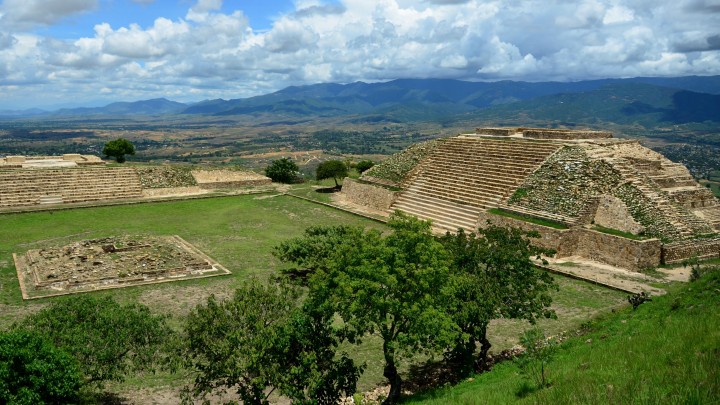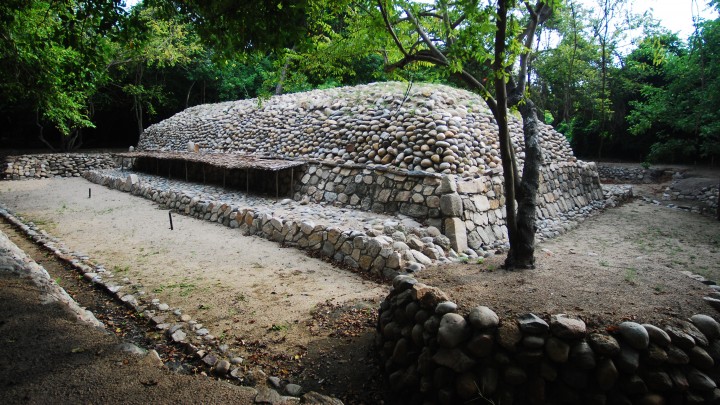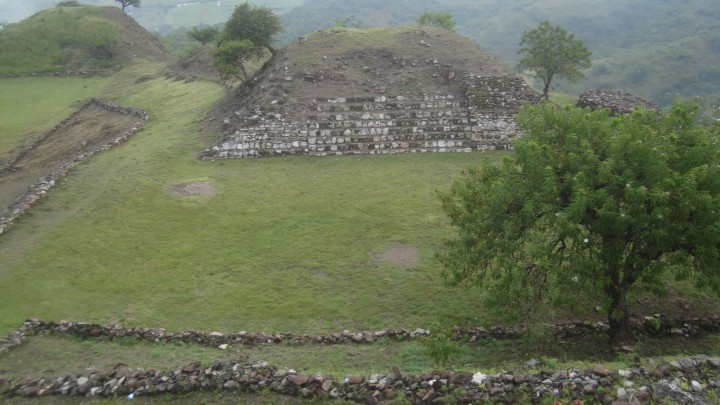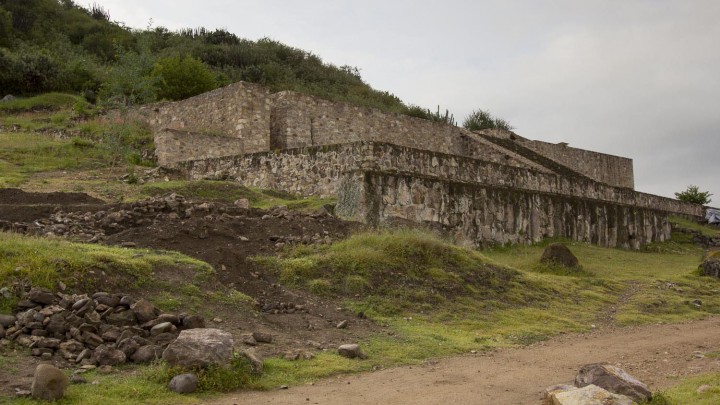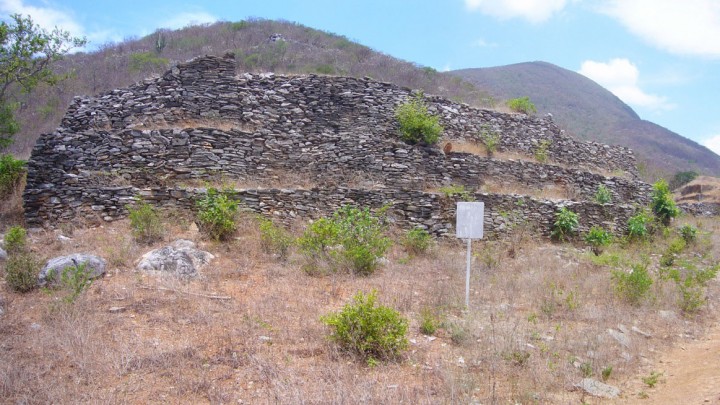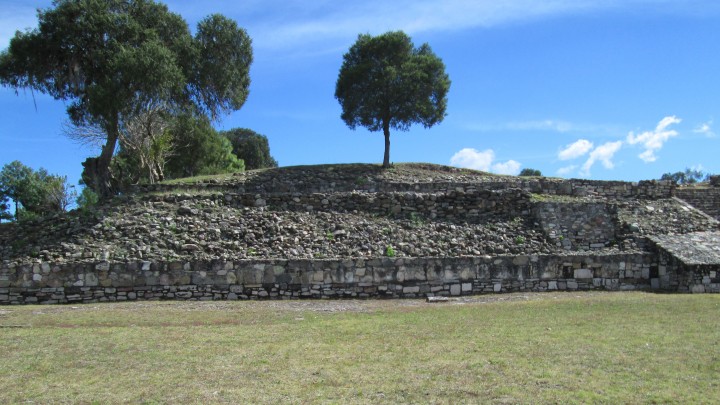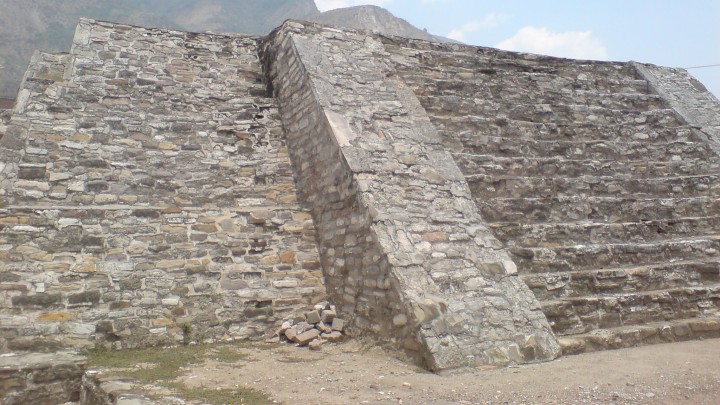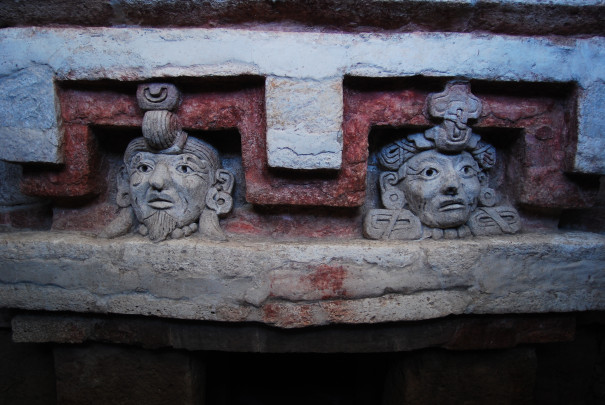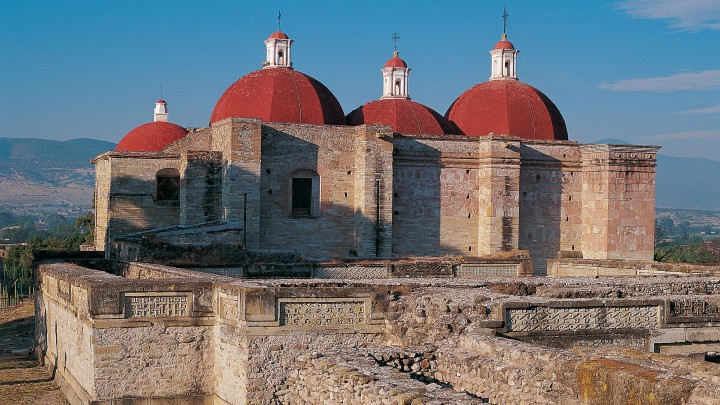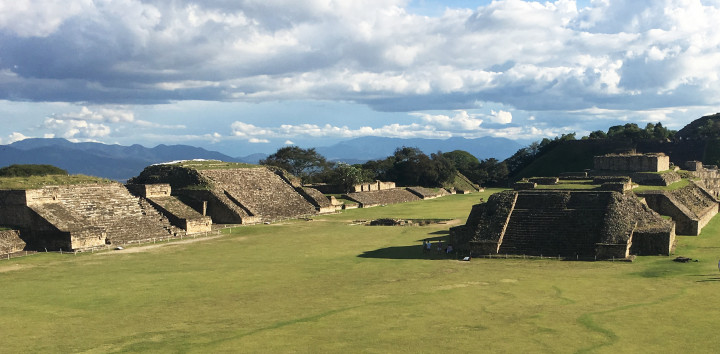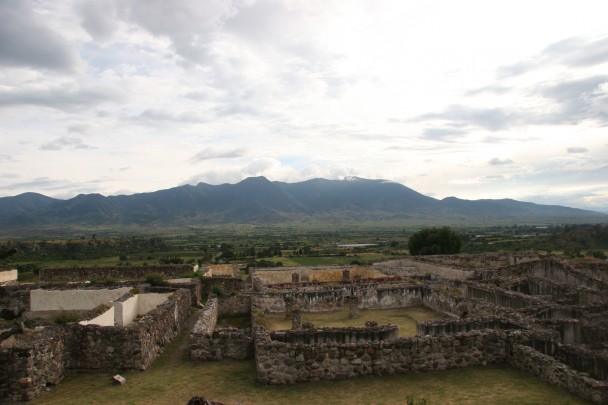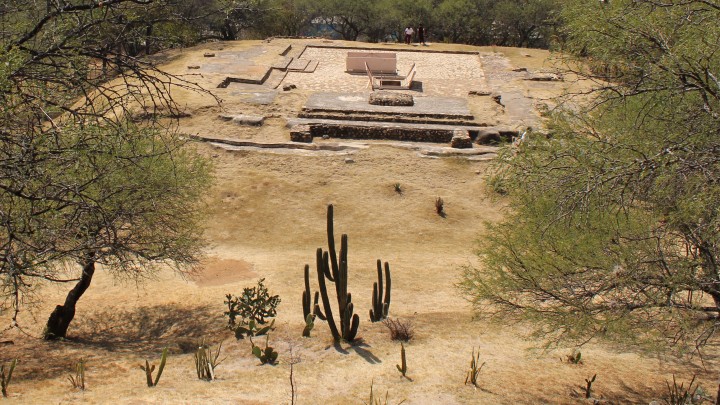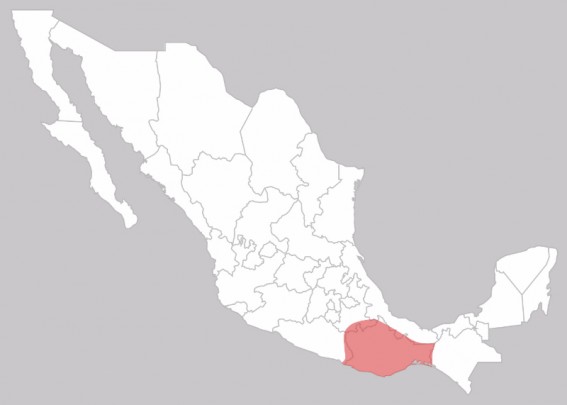
Oaxaca
In ancient times the area covered by the present-day state of Oaxaca, the west and north of Guerrero and the south of Puebla was inhabited by a great many ethnic groups, but dominated by the Zapotecs and Mixtecs. Both cultures called themselves “people of the clouds” in their own languages, a reference to the cloudy views over the high mountains.
The first inhabitants of the Central Valleys were hunter-gatherers, traces of whom date back to 10,000 BC. The first cultural expressions were developed during the Preclassic period between 1900 and 100 BC along the course of the Atoyac river. The evidence indicates the presence of complex village settlements such as Tierras Largas and San José Mogote, where a diverse range of vegetables were cultivated and stored. There are also indications of a calendar used for divination.
The Middle Preclassic (850-400 BC) was marked by social transformation leading to the first urban centers in the three branches of the valley of Oaxaca: Etla, Tlacolula and Zimatlan. These were the focus of power: places where the gods were worshiped and stone monuments were built with inscriptions, notably at San José Mogote. Around the final phase of the Preclassic, Zapotec groups established in centers such as Yagul, Dainzu and Monte Alban made contact with the Olmecs of the Gulf coast. At the same time, a Zapotec state evolved after 500 BC, when the city of Monte Alban was founded as the Zapotec political center. It continued to dominate the territory until around 900 AD.
Monte Alban’s authority defined the Oaxaca region of the Classic period (200-800 AD). It has been considered as the demographic focus of a confederation of urban centers in the valley, whose population lived mainly on dwelling terraces, which favored social stratification, the increase of trade and a more complex division of labor. Several carved stone representations of high status individuals from Teotihuacan would indicate significant contact with this great city of the Central Highlands during the early phase of the Classic period (200-500).
Standardized ceramic production reflects the degree of control exercised by the administrative centers over pottery production, and the funerary urns show the typically Zapotec feature of calendar imagery. Other urban cores developed in the area after 250 AD such as Huijazoo, Zaachila, Lambityeco, Yagul and Mitla, which were of lower status, and subordinate to the power of Monte Alban. It is common to find evidence of well-developed writing such as glyphs or inscriptions carved into stelae, stones, door posts or lintels in the various cities that accumulated political and religious power.
With the fall of Monte Alban, population movement and growth favored the appearance of several political centers occupied by various ethnic groups, which controlled less extensive regions than the great urban centers of the Classic period.
Cities such as Mitla, Zaachila and Huatulco were the most important in the Oaxaca region during the Postclassic from 900 to 1521. There is evidence of infiltration by one of the Mixtec fiefdoms, which led this group to expand into several sites in the Central Valleys by means of marriage alliances and chiefdoms. Some codices have enabled the reconstruction of the early phase of the period in detail and to understand the process of the Mixtec conquest which began around 940. The Mixtecs were renowned for their remarkable work with gold and their production of highly valuable gems, both aesthetically and technically.
Mexica military incursions into the Mixteca and the Valley of Oaxaca led by Ahuizotl were contained at some point during the Late Postclassic while the city of Mitla came into prominence as a religious and artistic capital. Mexica pressure in the area served to reinforce the bonds between the Mixtecs and the Zapotecs, nevertheless the entry of Triple Alliance armies into the Guiengola site led to a series of alliances between the Zapotecs and the invaders, and the subsequent displacement of the Mixtec groups. It was against this political background that the Spanish conquistadors first encountered the Zapotec jurisdiction.

